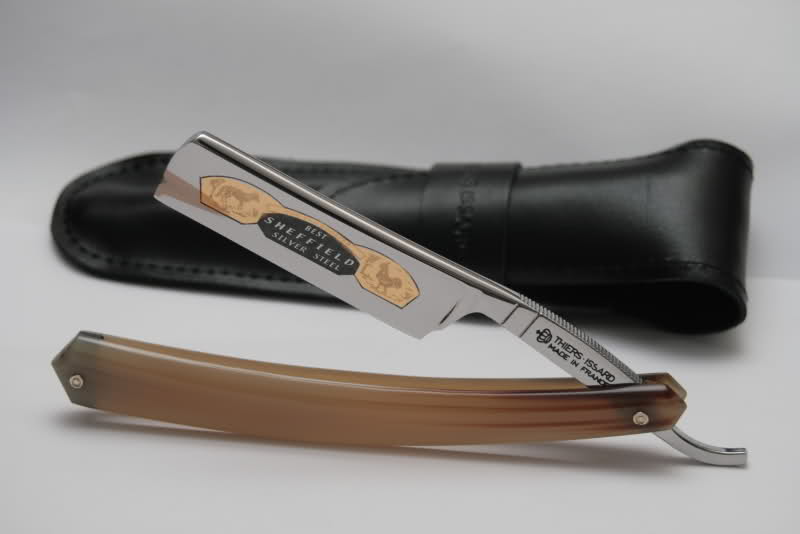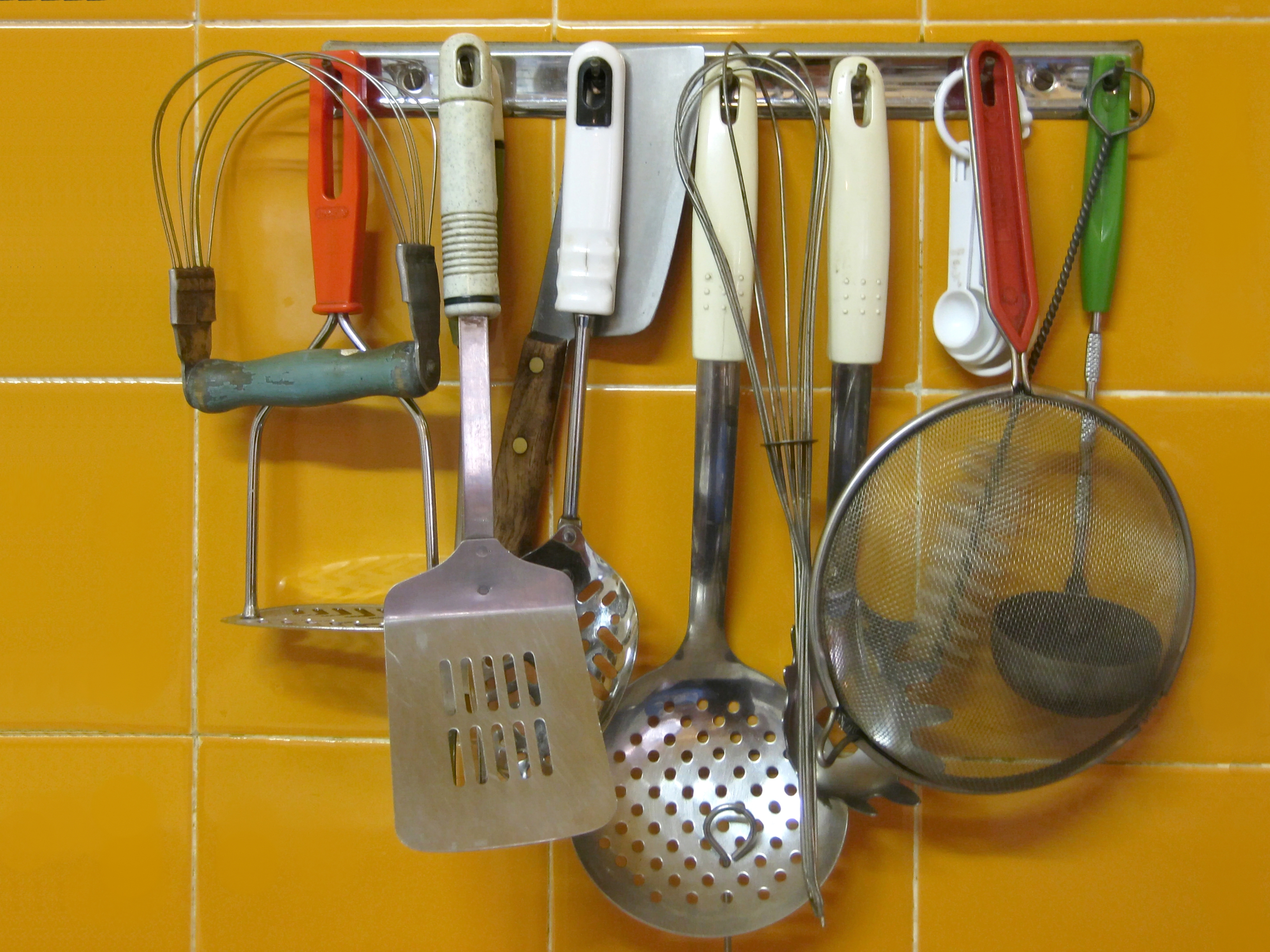|
Sabatier
Sabatier is the maker's mark used by several kitchen knife manufacturers—by itself it is not a registered brand name. The name Sabatier is considered to imply a high-quality knife produced by one of a number of manufacturers in the Thiers region of France using a full forging process; the knives of some of these manufacturers are highly regarded. However, the name "Sabatier" came into use before intellectual property laws and is not protected; knives legally bearing the name range from high-quality knives made in France to cheap mass-produced products of poor quality from France and other countries; a registered logo or full name, or both, such as "65 Sabatier Perrier", is necessary to establish origin and quality. History The name originated in Thiers, France, at the beginning of the 19th century. The area of Thiers has been associated with the cutlery industry since the 15th century. In the early 19th century, two separate families began using the name Sabatier to mar ... [...More Info...] [...Related Items...] OR: [Wikipedia] [Google] [Baidu] |
Thiers Issard
Thiers Issard or Thiers Issard Sabatier () is a French cutlery manufacturer, one of a number of companies using the Sabatier name. It exports a wide range of knife, knives and straight razors to approximately thirty countries.Classic shaving through the Internet Archive: The Thiers-Issard Story. (Blade manufacturing details) quote: ''...In 1884 Mr. Thiers undertook to establish his own forge and assume the rightful place of such a highly regarded craftsman - working for himself. In order to differentiate his products from those produced by other members of his family who were still active in the trade themselves, he named his factory Thiers-Issard, adding his wife's family name, Issard, to his own...'' and: ''As can be expected, the more grinding required, such as in the c ... [...More Info...] [...Related Items...] OR: [Wikipedia] [Google] [Baidu] |
Kitchen Knife
A kitchen knife is any knife that is intended to be used in food preparation. While much of this work can be accomplished with a few general-purpose knives — notably a large chef's knife and a smaller serrated blade utility knife — there are also many specialized knives that are designed for specific tasks such as a tough cleaver, a small paring knife, and a bread knife. Kitchen knives can be made from several different materials, though the most common is a hardened steel blade with a wooden handle. Historically, knives were made in "knife cities" that are noted for being the best at their production in that country with the pre-emininent, in Europe, being: Sheffield in Yorkshire, North of England; Thiers, Puy-de-Dôme in the Auvergne of France; Solingen in the Northern Rhineland of Germany; and Eskilstuna of Södermanland County in Sweden. Each of these produced knives in a styles particular to the city, with Thiers especially being noted for the French point of ... [...More Info...] [...Related Items...] OR: [Wikipedia] [Google] [Baidu] |
Thiers, Puy-de-Dôme
Thiers (; Auvergnat: ''Tièrn'') is a Communes of France, commune in the Puy-de-Dôme Departments of France, department of Auvergne (region), Auvergne in central France. With Ambert, Issoire and Riom, it is one of the department's four sub-prefectures. The district of Thiers consists of forty-three municipalities in six Canton (country subdivision), cantons. Its inhabitants are known as Thiernois or Bitords. Thiers is a major historical centre of knife manufacturing, with about one hundred companies and a cutlery museum; seventy percent of French Pocketknife, pocketknives, Kitchen knife, kitchen and Table knife, table knives are manufactured in Thiers. The knowledge and craft of the Thiernois cutlers are over seven centuries old, and many of the old watermills that were used to manufacture Thiernois knives can still be seen in the Vallée des Rouets. The city extends over on a rocky spur overhanging the nearby mountains and the villages. It is divided into two sections: the lowe ... [...More Info...] [...Related Items...] OR: [Wikipedia] [Google] [Baidu] |
Forging
Forging is a manufacturing process involving the shaping of metal using localized compression (physics), compressive forces. The blows are delivered with a hammer (often a power hammer) or a die (manufacturing), die. Forging is often classified according to the temperature at which it is performed: cold forging (a type of cold working), warm forging, or hot forging (a type of hot working). For the latter two, the metal is heated, usually in a forge. Forged parts can range in weight from less than a kilogram to hundreds of metric tons.Degarmo, p. 389 Forging has been done by metalsmith, smiths for millennia; the traditional products were kitchenware, household hardware, hardware, hand tools, edged weapons, cymbals, and jewellery. Since the Industrial Revolution, forged parts are widely used in mechanism (engineering), mechanisms and machines wherever a component requires high strength of materials, strength; such forgings usually require further processing (such as machining) ... [...More Info...] [...Related Items...] OR: [Wikipedia] [Google] [Baidu] |
Logo
A logo (abbreviation of logotype; ) is a graphic mark, emblem, or symbol used to aid and promote public identification and recognition. It may be of an abstract or figurative design or include the text of the name that it represents, as in a wordmark. In the days of hot metal typesetting, a logotype was one word cast as a single piece of type (e.g. "The" in ATF Garamond), as opposed to a ligature, which is two or more letters joined, but not forming a word. By extension, the term was also used for a uniquely set and arranged typeface or colophon. At the level of mass communication and in common usage, a company's logo is today often synonymous with its trademark or brand.Wheeler, Alina. ''Designing Brand Identity'' © 2006 John Wiley & Sons, Inc. (page 4) Etymology Douglas Harper's ''Online Etymology Dictionary'' states that the first surviving written record of the term 'logo' dates back to 1937, and that the term was "probably a shortening of logogram". Histo ... [...More Info...] [...Related Items...] OR: [Wikipedia] [Google] [Baidu] |
Bunch Of Grapes
In viticulture, the grape cluster (also bunch of grapes) is a fertilized inflorescence of the grapevine, the primary part of this plant used for food (grape leaves are also used in some culinary traditions). The size of the grape bunch greatly varies, from few grams to kilograms, depending on the grape variety and conditions during the fruit set. Architecture The placement of a cluster on the vine is similar to that of a tendril, as both develop from the same uncommitted primordia, the ''anlagen''. The grape bunch position on the side of the stem opposing a leaf is unusual for inflorescence of the plants. The typical shape of a cluster depends on the grape variety. The bunch of grapes, like a tendril, has two ''arms''. The inner arm develops into a full-grown cluster, the smaller outer one might die off, develop into a small tendril-like arm with no fruit, or form a large "wing" with berries that sometimes ripen differently than the ones of the main cluster (for example, in Tr ... [...More Info...] [...Related Items...] OR: [Wikipedia] [Google] [Baidu] |
Knife Making
Knife making is the process of manufacturing a knife by any one or a combination of processes: stock removal, forging to shape, welded lamination or investment cast. Typical metals used come from the carbon steel, tool, or stainless steel families. Primitive knives have been made from bronze, copper, brass, iron, obsidian, and flint. Materials for blades Different steels are suited to different applications. There is a trade off between hardness, toughness, edge retention, corrosion resistance, and achievable sharpness. Some examples of blade material and their relative trade offs: *The newest powder metallurgy steels can be made very hard, but can quickly wear out abrasives and tooling. *A blade made from low carbon or mild steel would be inexpensive to produce and of poor quality. A low carbon blade would be very hard to break, but would bend easily and be too soft to hold an edge. High carbon (or high alloy, in some listings) can take a much higher hardness but must be t ... [...More Info...] [...Related Items...] OR: [Wikipedia] [Google] [Baidu] |
Guy Degrenne
Guy Degrenne (3 August 1925 – 7 November 2006) was a French businessman who specialised in cutlery and silverware. He has founded the Guy Degrenne group, since 1987 a subsidiary of holding 'Table de France'.From . Biography Guy Degrenne was born in Tinchebray (Orne). He attended Collège Saint-Joseph in Caen, then studied at ESSEC Business School, and took up his father's steel factory (at Sourdeval) in 1948. Guy Degrenne first has war-left steel parts collected, and turns them in stainless steel Stainless steel, also known as inox, corrosion-resistant steel (CRES), or rustless steel, is an iron-based alloy that contains chromium, making it resistant to rust and corrosion. Stainless steel's resistance to corrosion comes from its chromi ... dishes, with instant commercial success. By 1958, Guy Degrenne sets up a tableware business, then by 1963 ushers in the luxury tableware business, in copying the standards of Parisian goldsmiths. In 1967, part of the production is mo ... [...More Info...] [...Related Items...] OR: [Wikipedia] [Google] [Baidu] |
Kitchenware Brands
:'' For a record label, see Kitchenware Records'' Kitchenware refers to the tools, utensils, appliances, dishes, and cookware used in food preparation and the serving of food. Kitchenware can also be used to hold or store food before or after preparation. Types Kitchenware encompasses a wide range of tools. Some of the most common items of kitchenware are: See also * Batterie de cuisine * Cookware and bakeware * Gastronorm, a European size standard for kitchenware * Eurobox, a European size standard for storage and transport * List of cooking vessels * List of eating utensils * List of food preparation utensils * List of glassware * List of Japanese cooking utensils * List of serving utensils * List of types of spoons * NSF International, formerly "National Sanitation Foundation" * Tableware Tableware items are the dishware and utensils used for setting a table, serving food, and dining. The term includes cutlery, glassware, serving dishes, serving utensils ... [...More Info...] [...Related Items...] OR: [Wikipedia] [Google] [Baidu] |
Knife Manufacturing Companies
A knife (: knives; from Old Norse 'knife, dirk') is a tool or weapon with a cutting edge or blade, usually attached to a handle or hilt. One of the earliest tools used by humanity, knives appeared at least 2.5 million years ago, as evidenced by the Oldowan tools. Originally made of wood, bone, and stone (such as flint and obsidian), over the centuries, in step with improvements in both metallurgy and manufacturing, knife blades have been made from copper, bronze, iron, steel, ceramic, and titanium. Most modern knives have either fixed or folding blades; blade patterns and styles vary by maker and country of origin. Knives can serve various purposes. Hunters use a hunting knife, soldiers use the combat knife, scouts, campers, and hikers carry a pocketknife; there are kitchen knives for preparing foods (the chef's knife, the paring knife, bread knife, cleaver), table knife (butter knives and steak knives), weapons (daggers or switchblades), knives for throwing or juggling, and k ... [...More Info...] [...Related Items...] OR: [Wikipedia] [Google] [Baidu] |








